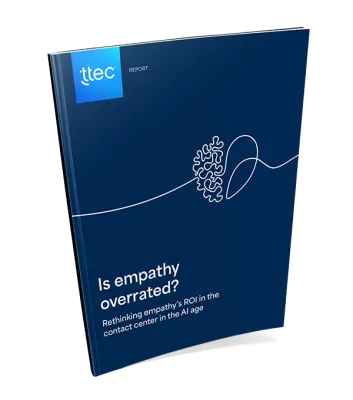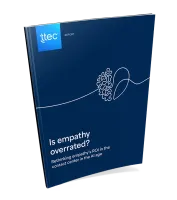More than 1 million homeowners are in various phases of exiting forbearance as borrower-assistance programs end. This means a surge of borrowers will be contacting mortgage banks and other lenders to discuss post-forbearance options. This can be a stressful period with long wait times and frustrated customers—or not.
With the right strategy and training, financial firms can be there for customers and turn a tough situation into a win. Here are 4 essential best practices and key tips for delivering a positive post-forbearance experience that doesn’t burn bridges.
1. The right mindset matters
According to the Mortgage Bankers Association's (MBA) latest Forbearance and Call Volume Survey estimate, 1.1 million homeowners are in forbearance plans. “With so many borrowers having reached the end of their 18-month forbearance term, we expect a steady pace of exits in November, " said Mike Fratantoni, MBA's senior vice president and chief economist, in a press release.
Contact center associates should think of this as a marathon, not a race. It’s important that associates are in the right mindset for supporting customers in stressful situations and to avoid employee burnout. Most companies focus on processes and scripting. This leads to robotic and detached interactions. At TTEC, our approach starts with recruiting, training, and coaching for mindset. Every associate needs to understand the client company’s culture, its place in the market, and what it is trying to achieve.
Tip: Remind associates to put themselves in the borrower’s shoes. Ask them, “If you were in this situation, how would you want to be treated?”
2. Give autonomy
The most successful contact center associates stay within the process and regulatory guardrails but also have a level of autonomy that allows them to conduct an empathetic conversation naturally while still negotiating with the customer.
Tip: Remove metrics and quality assurance constructs that prevent associates from feeling comfortable having a two-way conversation with the customer. For example, measure efficiency metrics like average handle time for management purposes only—and ensure associates are aware they are not tied to their performance rating.
3. Make skill development effortless
Once associates are equipped with the right mindset, experience and skill come into play. Ongoing training should make it easy for associates to develop critical skills in connecting with customers. They should be skillful in the following: active listening, mirroring, authentic empathy, questioning, negotiation, assertiveness (not aggression) and reassurance.
Tip: The secret sauce to better outcomes and a better customer experience is for associates to help customers take ownership of a repayment plan instead of feeling that they have been forced into it.
4. Keep it simple
How many elements are within your quality assurance scoring methodology? 10? 15? 20 or more? At TTEC we focus on 4 scored elements, which enable us to achieve fantastic outcomes along with strong customer satisfaction and few complaints.
Tip: Make sure the company’s quality assurance scoring methodology is aligned with its brand values and mission. Define the experience that customers should have with an associate and work from there.
A smarter approach
Gone are the days of customers tolerating inefficient customer support. Obviously, the sooner that banks and lenders can negotiate repayment options with borrowers, the better, but it’s also critical for associates to connect with customers and avoid burnout. Empathy combined with the right training go a long way in producing better outcomes for everyone.















